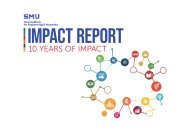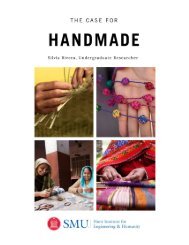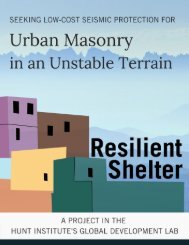Bridging the Gap in Diagnostics
Traditionally, biomedical engineers have developed technologies in response to the needs of the developed world’s medical community. These approaches often do not address the needs of the majority of the world’s peoples afflicted with both communicable and non-communicable diseases as the developments are far too costly and those with most need have, at best, limited access to supporting clinical laboratory infrastructure in developing countries. A gap in care has emerged as a result of these conditions. As a result, Drs. Beskok and Koklu have developed a Lab on a Chip technology that can test for a chosen disease with a turnaround time of just a few seconds and a detection limit of 1 ng of antigen per 1 mL of sample fluid. This is a great improvement to current devices on the market and is particularly useful in high-throughput, low-skill staffing environments. This report researched and authored by an interdisciplinary group of undergraduate students at the Southern Methodist University working in the Hunt Institute aims to address the areas of greatest need in response to UNSDG #3 "to ensure healthy lives and promote wellbeing for all at all ages."
Traditionally, biomedical engineers have developed technologies in response to the needs of the developed world’s medical community. These approaches often do not address the needs of the majority of the world’s peoples afflicted with both communicable and non-communicable diseases as the developments are far too costly and those with most need have, at best, limited access to supporting clinical laboratory infrastructure in developing countries. A gap in care has emerged as a result of these conditions. As a result, Drs. Beskok and Koklu have developed a Lab on a Chip technology that can test for a chosen disease with a turnaround time of just a few seconds and a detection limit of 1 ng of antigen per 1 mL of sample fluid. This is a great improvement to current devices on the market and is particularly useful in high-throughput, low-skill staffing environments. This report researched and authored by an interdisciplinary group of undergraduate students at the Southern Methodist University working in the Hunt Institute aims to address the areas of greatest need in response to UNSDG #3 "to ensure healthy lives and promote wellbeing for all at all ages."
You also want an ePaper? Increase the reach of your titles
YUMPU automatically turns print PDFs into web optimized ePapers that Google loves.
Secondly, regions in need also include Oceania and the subcontinent of India (see Figure
6). Malaria is primarily regionally transmittable and a disease which will not affect most
developed countries due to geography. The affected region conversation is important when
talking about current research, current funding, and incentives to the End Malaria 2030 goal. 36
The WHO notes “in sub-Saharan Africa, rapid-diagnostic tests (RDTs) are increasingly
becoming the most used method to test for malaria diagnosis among suspected malaria patients
in public health facilities. In 2017, an estimated 75% of malaria tests were conducted using
rapid-diagnostic tests, up from 40% in 2010.” 37 These findings help us to understand the
readiness by the market for a point of care diagnostic solution for Malaria. Currently however,
most RDTs are only testing for one strain of Malaria - P. falciparum - leaving a big need gap in
the diagnostic market for other strains tested. 37
4.2.1 GLOBAL FUNDING FOR MALARIA
Current funding efforts are concentrated within Sub-Saharan Africa, with consistent
funding from 2010 to 2017. However, global funding still has yet to meet funding markers
outlined by the SDG3. Three current areas of greatest need for Malaria funding support fall to
Africa, a majority of South-East Asia, and areas of the Eastern Mediterranean. Four big players
in the Malaria Funding sphere are Global Fund, PMI/USAID, World Bank and the UK (see
Figure 7). 3
As noted in the Tuberculosis funding section, Unitaid, an investment group focused on
investing in innovations to prevent, diagnose and treat HIV/AIDS, tuberculosis and malaria more
quickly, affordably and effectively is also a great source of private funding for Malaria
diagnostic development and deployment. 22
REGION Year Global Fund PMI/USAID World Bank UK
AFRICA
2015 $738,786,118 $605,640,000 $9,229,381 $66,200,701
2016 $904,764,475 $599,760,000 $30,269,301 $74,107,591
2017 $1,076,502,060 $671,000,000 $30,269,301 $26,835,158
SOUTH-
EAST ASIA
2015 $97,611,096 $9,270,000 $0 $5,199,619
2016 $75,297,356 $10,200,000 $0 $13,022,911
2017 $162,335,788 $10,000,000 $0 $4,715,737
EASTERN
MEDITERR
ANEAN
2015 $78,596,307 $0 $-383,193 $0
2016 $5,820,274 $5,820,274 $5,820,274 $5,820,274
2017 $6,888,183 $6,888,183 $6,888,183 $6,888,183
Figure 10: Contributions (USD) reported by donors for Malaria Funding in 3 main effected WHO geographical regions. 22
30













